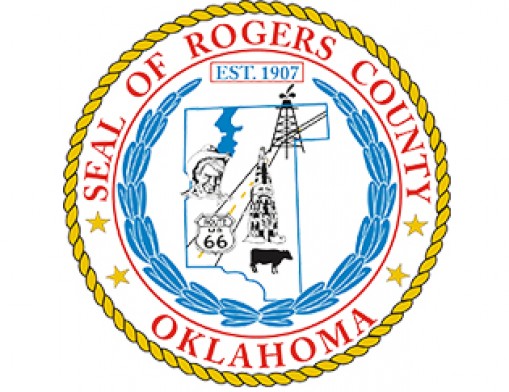Funds Available To Combat The Opioid Crisis
Rogers County passes resolution to apply for opioid funds, creates committee
By: Diana Dickenson | Category: Rogers County | Issue: April 2024

In a significant move aimed at combatting the opioid crisis gripping communities locally and nationally, the Rogers County Board of County Commissioners (BOCC) passed a resolution to apply for vital funds dedicated to addressing opioid addiction and its associated challenges. The resolution – passing unanimously during the commissioners' meeting on Monday, March 25 - reflects the county's commitment to taking proactive measures towards this issue.
Joint Application Between Rogers County and City of Claremore Submitted
The BOCC submitted a joint application with the City of Claremore for $506,158 to the Oklahoma Attorney General for the Oklahoma Opioid Grant Award on March 29, after months of working towards this. The $25 million allocated by the state received letters of intent from 250 political subdivisions across the state. Out of that total, only 101 have recently submitted applications to the state for consideration on May 22, leading up to the distribution of funds in July.
Approximately $36 million is also expected soon thereafter. Although the county applied for a half-million dollars, it is uncertain how much will be awarded. If awarded, this city-county collaboration brings an opportunity for continued funding over the next 15 years.
Claremore City Manager John Feary told the BOCC this is an opportunity to come forward as a group to make a difference. The Claremore City Council passed a resolution on March 18 to partner with the county to pursue grant funds.

How Does A Joint Application Help?
Feary said, “I think we really have an opportunity to have an impact and make a difference long term.”
By pursuing these funds together, the City-County must follow the Oklahoma Attorney General’s strategies and guidelines to support individuals struggling with addiction, while also focusing on prevention and community education efforts.
Terry Simonson, special counsel to the Oklahoma Attorney General’s Office attended the meeting and gave an overview to the BOCC regarding the grant opportunity.
Simonson said of the BOCC, “You guys are a good example. [Creating] the advisory council. Partnering. That is a good deal. [Political] subdivisions working together instead of competing. Coming together makes your application much stronger.”
How Will Funds Be Utilized?
Of 1,227 political subdivisions (cities, counties, school districts and career technical schools) in Oklahoma, only 250 of those submitted letters of intent. The State Legislature, he noted, intervened by restricting the eligibility to apply to only political subdivisions, thereby excluding service providers.
The funds sought by the county will enable the implementation of evidence-based interventions [to include schools], including access to treatment, overdose prevention initiatives, and support services for those in recovery, to name a few.
Is There Still An Opioid Crisis?
Simonson emphasized, “We think we are in the fifth wave of addiction. Opioid was the first…but then it went to synthetic – that was your fentanyl. Then it went to heroin, now it is methamphetamine again.”
When one is sadly addicted and their drug of choice is cut off, he said, leaves the addict to find another one. “They just keep moving. So, we are kind of just chasing these people, [who are] particularly [giving] the kids some little pill that looks like nothing, and then they are dead tomorrow. That is not right.” In agreement, Commissioner Chairman Dan DeLozier said, “No, that is not right.”
Commissioner Ron Burrows credits Simonson for a tremendous amount of the latest information needed to set up a method to address the crisis. “I would be willing to guess there is not anybody in this room who has not been touched by somebody with an opioid issue. It is pervasive everywhere,” Burrows added.
Commissioner Steve Hendrix of District 2 addressed Feary by stating, “I want to thank the City for their partnership. This is certainly something that is going to pay dividends for everybody in Rogers County – something we can be proud of, and it is another testament to a lot of accomplishments that the city and county has worked together on.”
Hendrix further stated, “It is a great example of forward and progressive thinking of the leadership across the board in the city and county right now.” DeLozier further said, “I came from a time when the city and county…did not get along at all, to a time where we are doing what we need to between the city and the county -- and everybody is working well together.”
Who Is The Advisory Committee and What Do They Do?
The resolution that passed also created the “Rogers County Opioid Abatement Advisory Committee.” This committee may consist of members from District Attorney's Office, Sheriff's Office, Rogers County District Court, Rogers County Health Department, Native American Tribes, Mental Health agencies, Rogers County area hospitals/medical centers, and Rogers County and/or representation from recovery/rehabilitation and treatments centers not available in Rogers County. These members will provide recommendations to the BOCC, who will make the final decision on the most optimal utilization of funds.
The resolution passed by the BOCC signifies a pivotal step forward in the county's efforts to tackle the opioid crisis head-on. Through collaboration, innovation, and a steadfast commitment to the well-being of its citizens, the BOCC will strive towards a future where opioid addiction no longer holds sway over its communities.
How Did The Opiod Crisis Start?
In 2016, the Centers for Disease Control and Prevention (CDC) reported an overall opioid prescribing rate of 66.5 prescriptions per 100 people. In contrast, Rogers County, Oklahoma, had a prescribing rate of 103.9 prescriptions per 100 people in the same year. This data is sourced from the CDC's website (www.cdc.gov/drugoverdose/maps/rxrate-maps) and QuintilesIMS Transactional Data Warehouse (TDW) 2006–2016.
Rogers County Courthouse
For more information, contact:
Diana Dickenson
(918) 703-2370
eat0@eau0eav0eaw0
200 S. Lynn Riggs Blvd | Claremore, OK 74017
Rogers County Courthouse Online:
More about Rogers County Courthouse:
More ArticlesSubscribe
For Free!



